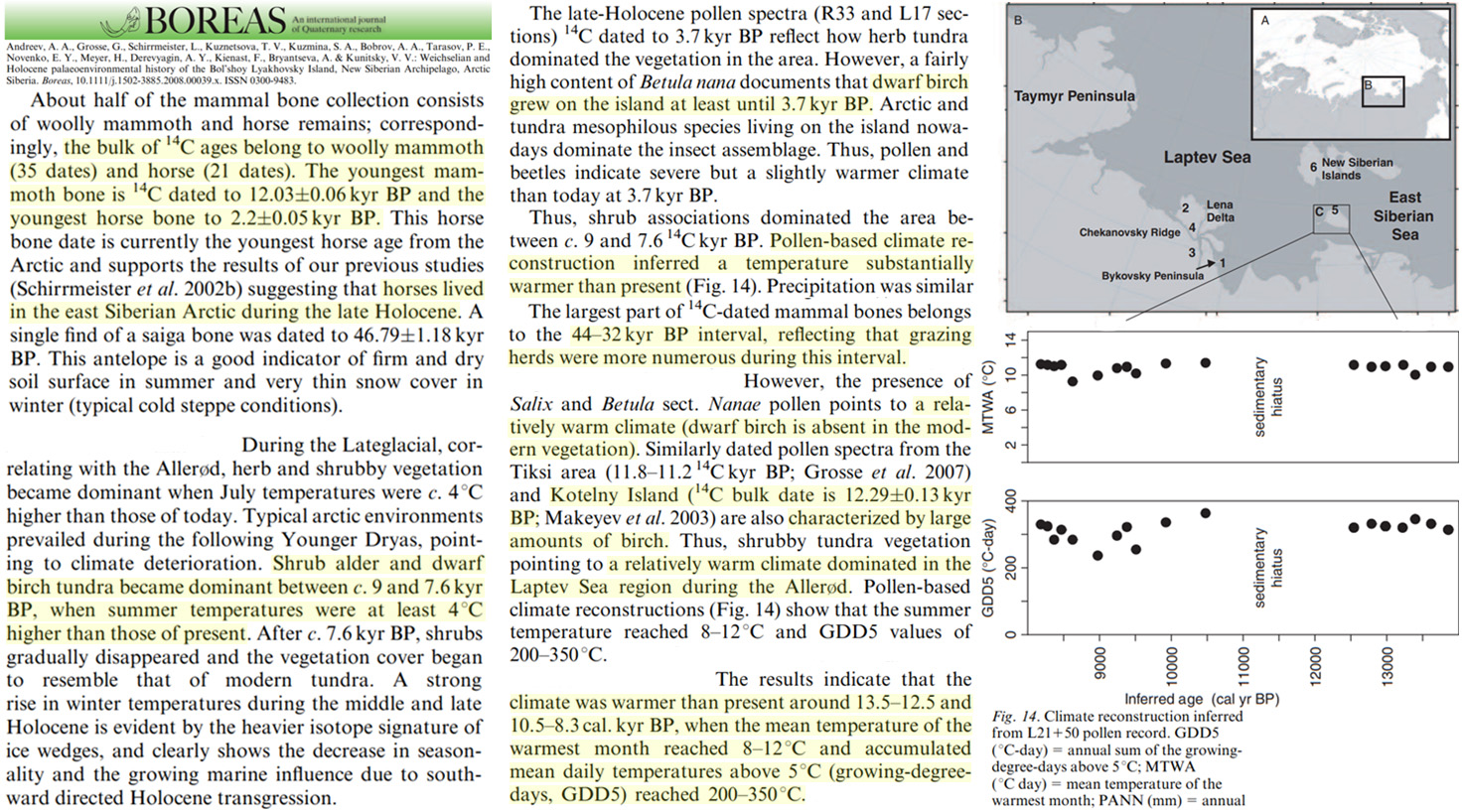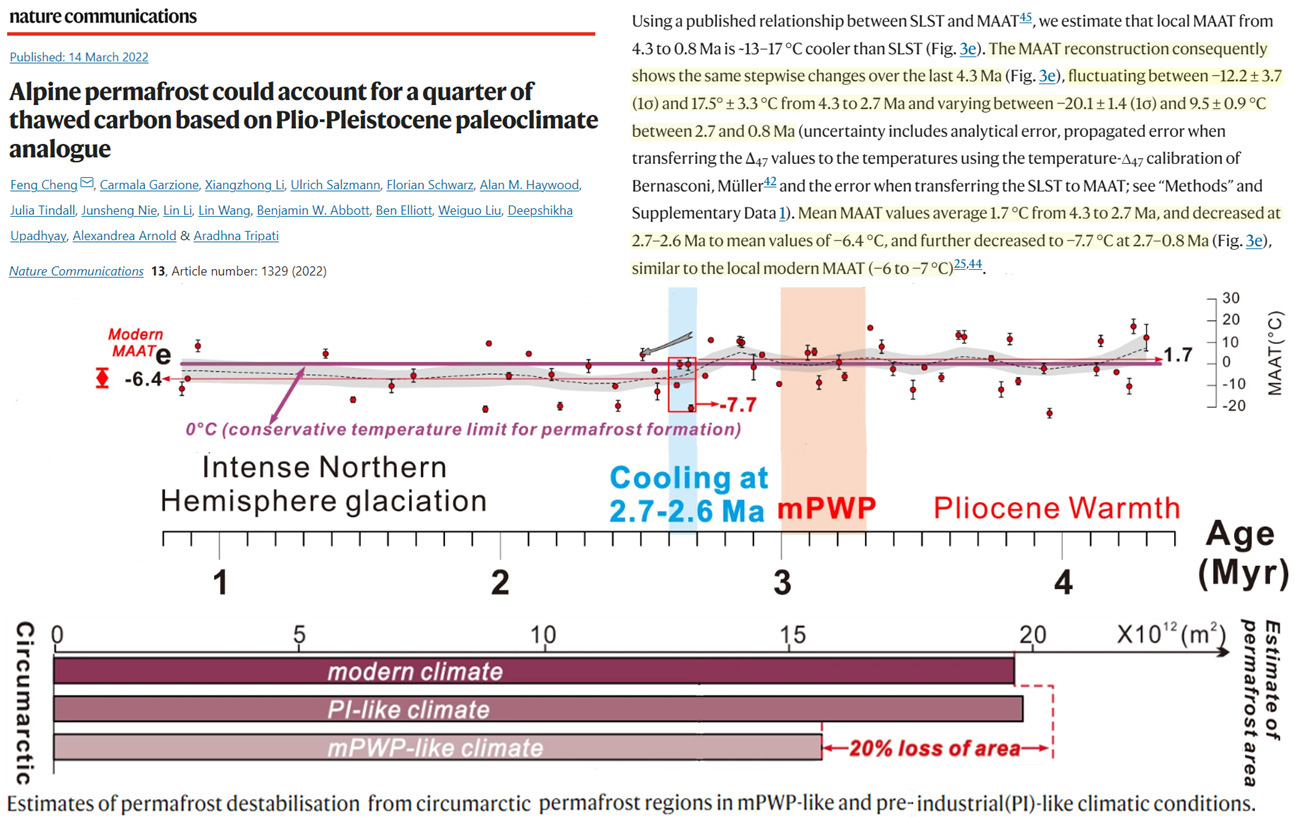From about 14,000 to 12,000 years ago, when CO2 hovered around a “safe” ~240 ppm, Siberian Arctic July temperatures reached ~8 to 12°C, which is at least 4°C warmer than today (Andreev et al., 2008).
Grass grew 300-350 days a year in the late stages of the last glacial in the Siberian Arctic. This allowed horses, antelopes, and other large grazers (mammoths) to continuously reside at these high latitudes.
Horses continued grazing on Arctic grass year-round until as recently as 2,200 years ago. Today these regions have tundra climates. Grazers can no longer survive in the modern colder-than-the-last-late-glacial conditions.
The Siberian Arctic also had extensive birch forests 14,000 to 12,000 years ago. Birch trees were still growing in this region as late as ~3,700 years ago. Today these same regions are too cold for birch trees to grow.
Image Source: Andreev et al., 2008
A new Nature study (Cheng et al., 2022) suggests the Arctic-wide permafrost extent is today nearly the same as it was in the 1700s-1800s, or the pre-industrial (PI) Little Ice Age. In contrast to this modern/pre-industrial expansive permafrost extent, the circumarctic permafrost area was as much as 20% smaller from about 3.3 to 3 million years ago (Ma).
These scientists have also determined that the Tibetan Plateau – characterized as the Earth’s “Third Pole” due to its elevation and extensive cryosphere – had mean annual temperatures that reached 17.5°C during the period from 4.3 to 2.7 million years ago (Ma). Today the mean annual temperatures are only -6.4°C for this region, or about 24°C colder. Mean annual temperatures could also dip below modern values during the Pliocene, as the climates in these ancient epochs varied by as much as 30°C (-12.2°C to +17.5°C).
Approximately 0.9 Ma, or when CO2 was still thought to be well under 300 ppm, the mean annual temperatures were determined to be ~9°C, or 15.6°C warmer than today.
Image Source: Cheng et al., 2022
None of these climate variations are consistent with popularized alarmist claims that Arctic or “Third Pole” surface temperatures are determined (or even partially influenced by) changes in CO2 concentrations.





[…] Horses Grazed On Grass Year-Round In A Birch-Forested Siberian Arctic Until 2200 Years Ago […]
Have a look at this :
Ned Nikolov: Dispelling the Milankovitch Myth
https://tallbloke.wordpress.com/2022/01/03/ned-nikolov-dispelling-the-milankovitch-myth/
Not CO2, rather atmospheric pressure is key.
[…] Fonte: No Tricks Zone […]
And the methane from their farts caused Global Warming which, as we all know, causes more and more severe winters. Man Made CO2 will do the same thing. We are doomed.